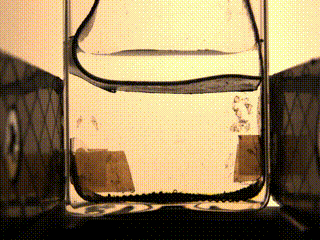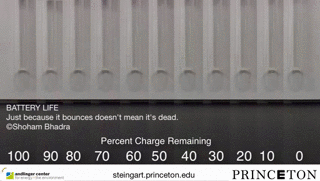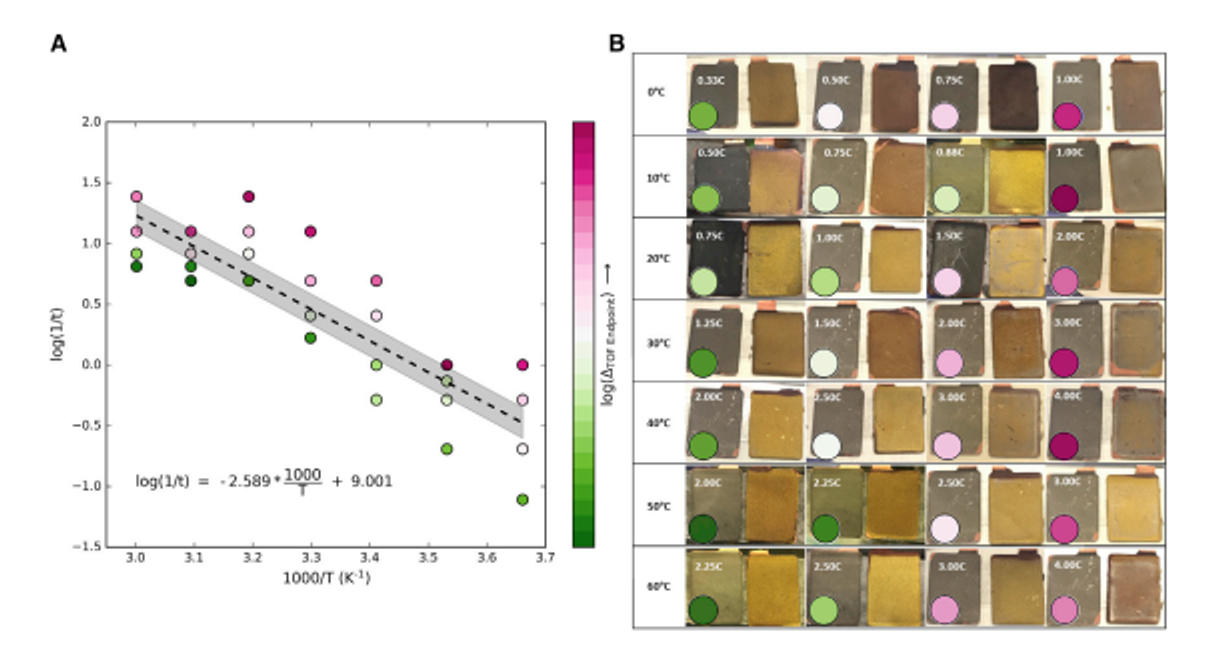We study, design, build, destroy and generally tinker with electrochemical systems, mostly batteries but also metal production systems. Our research is typically between the cracks of materials science and systems engineering, studying how chemistry, electronics, and mechanics interact at various scales in an electrochemical reactor as a function of its purpose.
For Example:
Living Forever by Dying Everyday
Does a battery have to die when it short circuits?
Only if it is not designed to survive the event. What has been shown in a variety of contexts is that an unpredictable battery is a dangerous battery. If a short circuit can be compensated internally, checks can be engineered into the systems to take us back to a safer place. After all, knowing is half the battle.
Starting with the hoary zinc-bromide system, we have demonstrated that a balanced system can survive and thrive if the thermodynamics, kinetics, and mass transport are optimized not only for the primary reaction (i.e. energy storage), but for the self-discharge reaction as well.
Full of Sound and Fury, Signifying Something
If a battery falls in the woods, does it make a sound?
Surprisingly, the answer is yes, and if one listens carefully, one can discern multiple states of the battery (charge, power, health, safety) and characterize the composition, structure, and phase components within the cell. We have shown with solid confidence that the proper interpretation of the sound speed changes within a battery has to correlate with key aspects of battery behavior.
We are working with other academics and industry to improve our understanding of acoustic/electrochemical coupling while working to make batteries better.
It also explains why dead batteries bounce.
What's After Lithium Ion?
Heck if we know. A lot of people think it's lithium metal, so we've spent some time studying how the most reducing element in the periodic table behaves in various contexts and settings. As you might expect, it could behave better. But in examining lithium's behavior in both good (e.g., we want a lithium anode to work) and bad (e.g., we do not want lithium metal to exist in a lithium-ion battery), we've gained some new insights into behaviors. More to come.
And So Forth
In the past, we have worked on Zn-MnO2 systems (super complex to stabilize, but heaven holds a place for they whom can), flexible batteries (but no one could tell us what they were really useful for, so we stopped). We also spend a fair amount of time building internal software and hardware to enable all of the fun things, and the building is fun as well.
To What End?
Thus far, the group has graduated 10 PhD students and 10 MS students and has served as a home to many fantastic post-doctoral researchers and undergraduate students. Our alumni have started two companies based on research and software created in the lab, and a few more are probably in the works. Our alumni find themselves in exciting positions at big companies, small companies, and excellent universities.
Where Are You?
We are proudly housed in the School of Engineering and Applied Science at Columbia University. We are affiliated with the Departments of Earth and Environmental Engineering and Chemical Engineering, the Columbia Electrochemical Energy Center, and the Earth Institute.
Previously, we were fortunate to have been at Princeton University in the Department of Mechanical and Aerospace Engineering and the Andlinger Center for Energy and the Environment. Previous to this, we were at the City College of New York in the Department of Chemical Engineering and the CUNY Energy Institute.
How Do You Do What You Do?
With very generous support from federal and industrial sponsors. Current sponsors include DOE ARPA-E, DOT, NSF, Mercedes Benz Research and Development North America, General Motors, and ICL. Previous sponsors included BP, ExxonMobil, AlphaEn, Princeton University and NASA. Our experimental programs were enabled by financial support from and facilities from the City University of New York, Princeton University, and now Columbia University.
Is this Interesting?
Do you want to work on the things above? Please reach out before applying. Graduate studies are not like undergraduate studies. Faculty directly review graduate school applications (this lab is affiliated with Earth and Environmental Engineering and Chemical Engineering). Faculty are also directly responsible for paying your tuition and stipend (yes, you get paid to get a Ph.D., not very much, but hey, we're trying). So reaching out directly to me is a great way to let us know you're interested, and it is immensely helpful for our budgeting. Note that SEAS determines the stipend and benefits.
We Are Interested InYou
We do what we do to make the world a little closer to a technology-enabled post-scarcity economy, and we cannot do it without proper representation from everyone who would benefit from and live in such a world. This means you. We welcome and celebrate all backgrounds and self-identifications and strive to nurture an internal culture of diversity, inclusion, equity, respect, and understanding. We cannot do what we do without understanding the world's needs, and we cannot understand the world's needs without maximum representation.
Get in touch!
Best Ways
dan.steingart@columbia.edu
@steingart
Dan Steingart's Office
p: 212 854 1712
500 W120th St
926E Mudd
New York, NY 10027
Labs
500 W120th St
934, 942 & 946 Mudd
New York, NY 10027
(note: if you’d instead go straight to the engine of the group, skip the old man, and want to speak with a peer before reaching out to Dan, feel free to contact anyone in our group)



